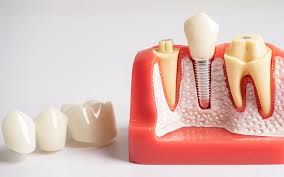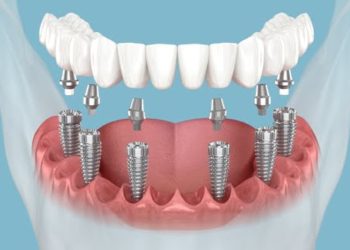Starting an IVF journey can feel both hopeful and uncertain, especially for couples exploring options abroad. Cyprus has become a top destination for fertility treatments, offering world-class medical care, experienced professionals, and patient-centered approaches that increase the chance of success. Knowing what lies ahead from the first consultation to the final pregnancy test helps reduce stress and allows patients to feel more in control.
This step-by-step guide walks you through every part of the IVF process, highlighting what to expect and how to prepare. From understanding your fertility status and preparing for treatment, to egg retrieval, embryo transfer, and the awaited pregnancy test, we’ll cover each stage clearly. Whether you’re traveling from abroad or seeking care locally, this timeline ensures you know what’s next and how each step brings you closer to your dream of becoming a parent.
Starting With the First Fertility Consultation
The journey toward parenthood through IVF begins with a detailed fertility consultation. At this stage, patients meet with fertility specialists who review medical histories, conduct preliminary assessments, and explain the treatment options available. It’s also the first opportunity to ask questions, share expectations, and build trust with the clinic team. The consultation helps identify the causes of infertility and determines the best course of action for treatment.
This first meeting is often held in person or via online communication for international patients. Specialists at trusted clinics, such as those offering IVF treatment in Cyprus, provide personalized guidance and a clear roadmap for each individual or couple. From explaining hormone protocols to outlining travel logistics, the initial consultation lays the foundation for a smooth and well-organized fertility journey.
Reviewing Medical History and Hormonal Levels
The initial consultation includes a deep dive into your medical background. Doctors assess menstrual cycles, prior pregnancies, surgeries, and any known reproductive health concerns. Blood tests are done to measure hormone levels such as AMH, FSH, and LH. This information helps tailor your treatment plan and ensures that the IVF process is both safe and effective for your body.
Performing Ultrasound and Physical Checks
During the same visit, a transvaginal ultrasound is performed to evaluate the uterus and ovaries. This gives a clear picture of follicle count and uterine structure. Physical exams may also be carried out to detect any abnormalities. These steps are crucial in shaping the next phases of the IVF plan and ensuring a healthy environment for embryo development.
Exploring IVF Options and Planning the Process
After evaluations, the doctor will present your treatment options based on your fertility profile. This includes discussing whether to use your own eggs or consider donor options. A customized IVF protocol is then mapped out, covering medication, timing, and travel if needed. Patients leave this consultation with a clear plan and renewed hope for success.
Getting Ready for the IVF Treatment Cycle
Once the consultation and assessments are complete, preparations for the treatment cycle begin. This phase is all about synchronizing the body and mind for the upcoming procedures. Patients receive a detailed calendar outlining medication schedules, scan appointments, and possible travel dates. Hormonal medications are usually started to stimulate the ovaries for egg production. Regular communication with the clinic ensures that every step goes as planned.
At Vita Altera IVF Center, patients are guided by a professional team with years of expertise. Clear instructions on how to administer injections, manage side effects, and stay emotionally prepared are provided with compassion and care. The clinic also helps with logistical details like accommodation and airport transfers. With a personalized treatment plan in hand, patients feel more empowered as they move closer to their IVF goals.
Understanding the Medication and Hormone Protocol
IVF treatment often begins with hormone injections to stimulate the ovaries. Patients receive detailed instructions on when and how to take each medication. The dosage may vary depending on hormone levels and follicle response. Proper use of these medications ensures a successful egg retrieval and reduces risks such as overstimulation. Support is available throughout to answer any concerns.
Monitoring Follicle Growth With Ultrasound Scans
During ovarian stimulation, patients undergo several ultrasound scans to monitor follicle development. These scans help track the number and size of follicles and determine the optimal timing for egg retrieval. Blood tests may accompany ultrasounds to measure hormone levels. This close monitoring ensures safety and helps the fertility team adjust the protocol as needed for best results.
Organizing Travel and Stay in Cyprus
International patients are supported with travel coordination and accommodation. Most clinics in Cyprus, including top IVF centers, offer assistance with flights, hotel bookings, and airport transfers. Patients typically stay for about a week during key stages of the cycle. A trusted Cyprus IVF clinic ensures that these logistics are smooth and stress-free, allowing patients to focus entirely on their treatment journey.
From Egg Retrieval to Fertilization Process
The egg retrieval phase is one of the most critical milestones in the IVF journey. When the follicles have reached the appropriate size, a trigger shot is given to prepare the eggs for collection. The procedure is performed under mild sedation and typically takes around 15–20 minutes. Using ultrasound guidance, the doctor collects mature eggs from the ovaries using a fine needle. Patients can usually return to rest shortly afterward and continue with light activities the next day.
Once the eggs are collected, they are handed over to the embryology lab for fertilization. Here, either traditional IVF or ICSI (Intracytoplasmic Sperm Injection) is used, depending on the case. The fertilized eggs, now embryos, are monitored over several days for growth and quality. The lab environment, equipment, and the skill of embryologists play a vital role in ensuring the best embryos are developed for transfer.
How the Egg Collection Procedure Is Done
Egg retrieval is a short outpatient procedure performed under sedation. A thin needle is inserted through the vaginal wall to collect eggs from mature follicles. Guided by ultrasound, the doctor ensures precision and safety. The entire process takes about 15–20 minutes, and patients typically rest for a few hours before being discharged with aftercare instructions.
Fertilization and Embryo Growth in the Lab
After egg retrieval, the embryology team prepares the eggs and sperm for fertilization. Either conventional IVF or ICSI is used depending on individual needs. The fertilized eggs are then cultured in incubators, closely monitored for development. The embryos are graded based on quality and development stage, typically reaching the blastocyst stage around day five after fertilization.
Evaluating Embryos for Transfer
On the day of transfer, embryologists evaluate which embryos are best suited for implantation. Factors such as cell number, fragmentation, and growth rate are considered. High-quality embryos are chosen to increase the chances of success. Some clinics also offer genetic testing (PGT) to select embryos with the highest potential for pregnancy and reduce the risk of miscarriage.

Embryo Transfer and Aftercare at Vita Altera IVF Clinic
Embryo transfer is a gentle and quick procedure that marks one of the final steps in the IVF journey. After careful embryo evaluation, the selected embryo is placed into the uterus using a thin catheter. This procedure does not require anesthesia and is usually completed within 10–15 minutes. Patients may rest briefly in the clinic afterward. The goal is to create the most favorable conditions for implantation.
Following the transfer, aftercare is crucial. Patients receive personalized instructions regarding medications, physical activity, and emotional well-being. Light movement is allowed, but high-stress environments and heavy physical exertion are discouraged. Vita Altera’s team provides continuous support during this phase, ensuring patients feel cared for and informed. This support significantly enhances the emotional experience during the sensitive waiting period.
Choosing the Best Embryo for Transfer
Embryologists carefully assess each embryo to identify the one with the highest chance of implantation. Criteria include development speed, appearance, and cell symmetry. In some cases, preimplantation genetic testing (PGT) may be used to further evaluate chromosomal health. Selecting the best-quality embryo increases the likelihood of a successful pregnancy with fewer risks involved.
The Transfer Procedure at the Clinic
Embryo transfer is performed in a calm, sterile environment using ultrasound guidance for precision. A soft catheter delivers the embryo into the uterus, a process that takes only a few minutes. There is no need for anesthesia, and patients can watch the procedure in real time. The experience is gentle and usually painless for most individuals.
Resting and Following Post-Transfer Instructions
After the transfer, patients are advised to rest for a short period before returning to their hotel or home. Instructions typically include avoiding heavy lifting, reducing stress, and continuing prescribed medications. Clinics often recommend gentle physical activity like walking. Emotional support and clear communication during this stage are essential for maintaining calm and hopeful anticipation.

Waiting Period and Pregnancy Test Result
The waiting period after embryo transfer, often called the “two-week wait,” is an emotionally intense time for many patients. Although the procedure is over, the outcome remains unknown, leading to a mix of hope and anxiety. During this time, patients continue taking prescribed medications to support implantation and early pregnancy. Clinics encourage rest, light activity, and emotional self-care to manage stress effectively.
At this stage, communication with the clinic remains important. Patients receive ongoing guidance and reassurance. Avoiding early pregnancy tests is advised, as they can give false results. Instead, a blood test is scheduled around 10–14 days after the transfer to measure hCG hormone levels. This provides a reliable answer about whether implantation was successful and marks the beginning of the next steps.
Understanding the Two-Week Wait
The two-week wait is the time between embryo transfer and the pregnancy test. Emotionally, it’s often the most challenging part of the IVF journey. Patients are advised to stay calm, avoid stress, and follow their doctor’s instructions carefully. Symptoms like cramping or spotting may occur but aren’t reliable signs. Emotional support is especially valuable during this sensitive time.
David Prior
David Prior is the editor of Today News, responsible for the overall editorial strategy. He is an NCTJ-qualified journalist with over 20 years’ experience, and is also editor of the award-winning hyperlocal news title Altrincham Today. His LinkedIn profile is here.













































































